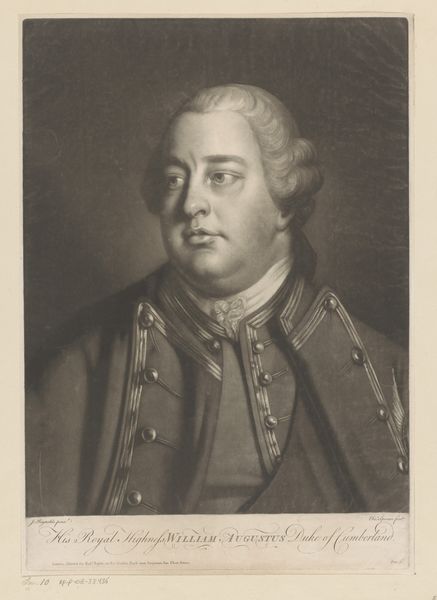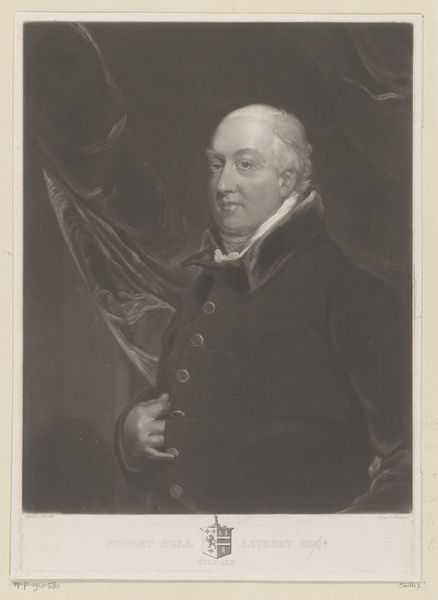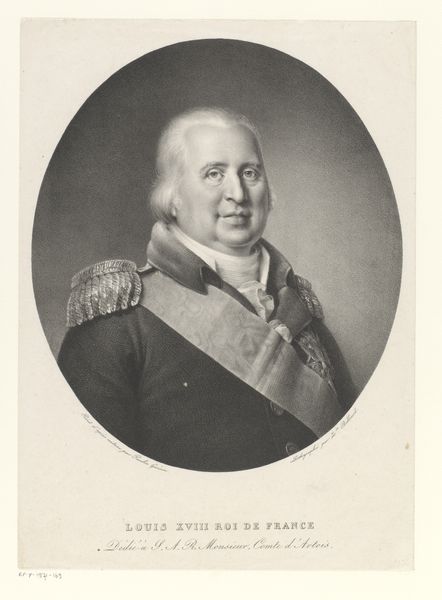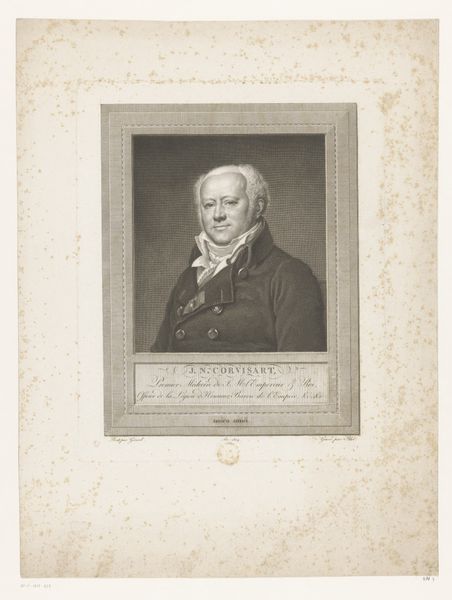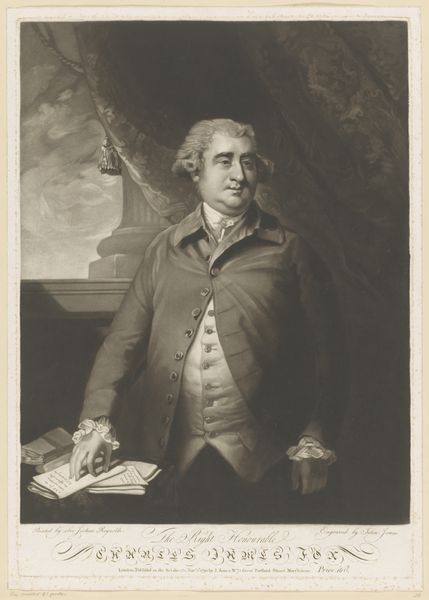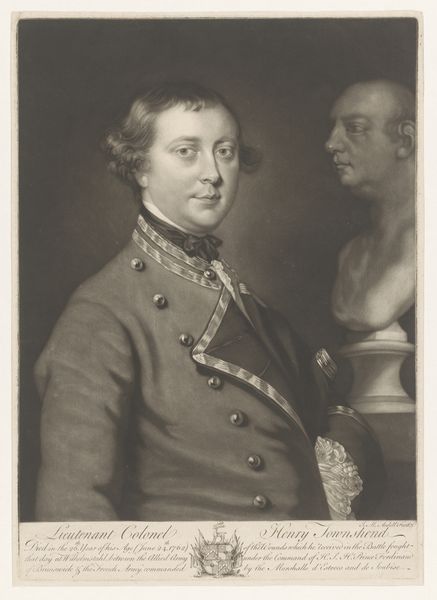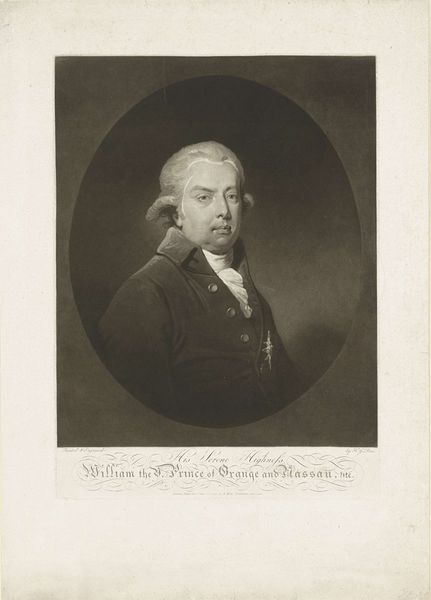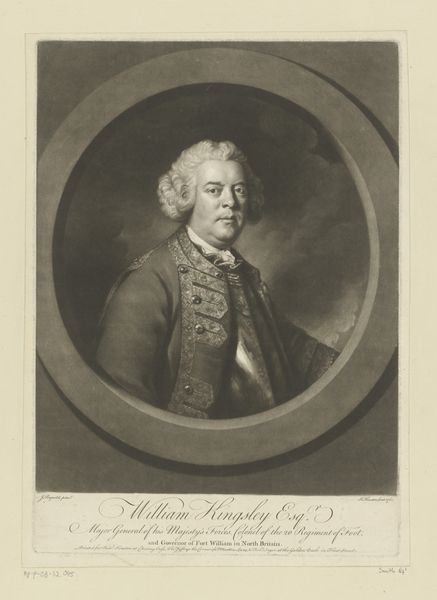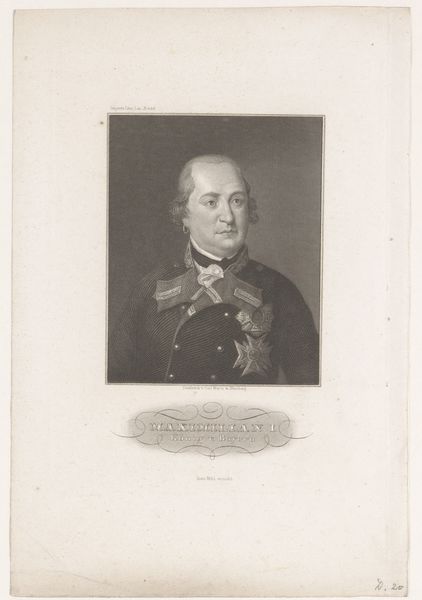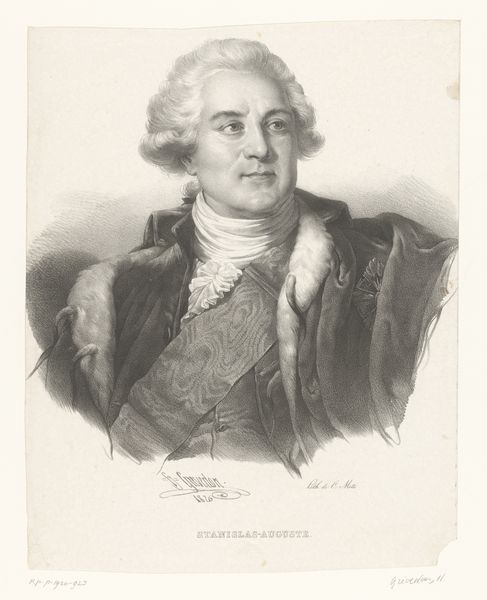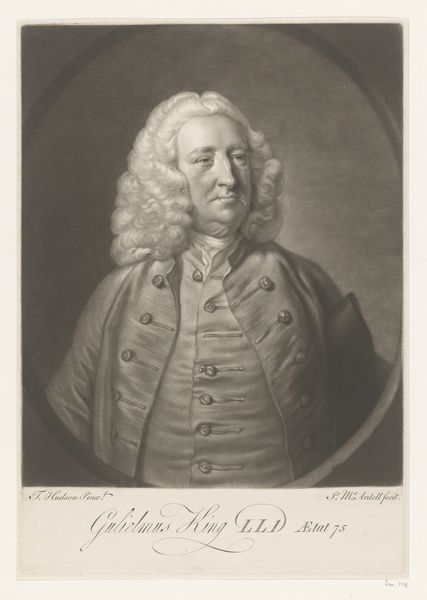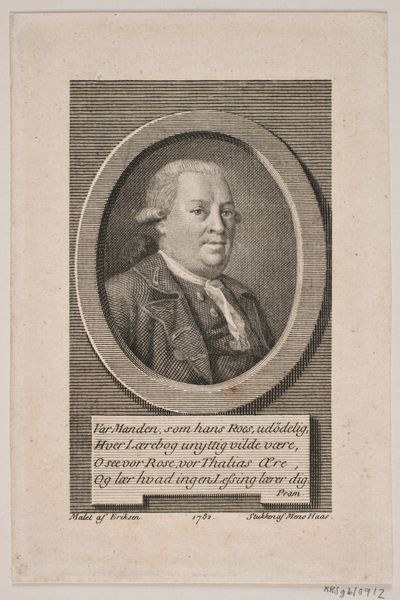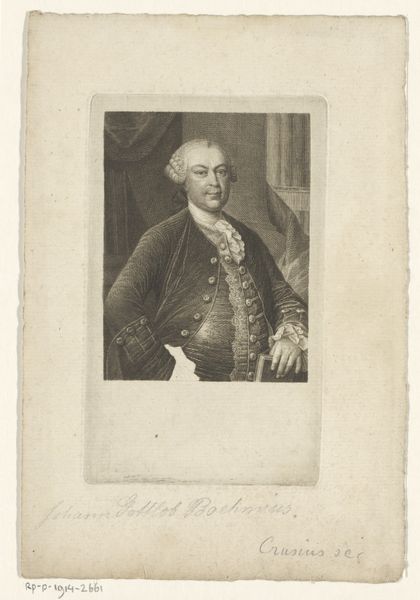
Dimensions: height 331 mm, width 227 mm
Copyright: Rijks Museum: Open Domain
Curator: So, here we have "Portret van Willem Augustus van Cumberland", or "Portrait of William Augustus, Duke of Cumberland" created by Edward Fisher around 1760-1765. It’s an engraving. Editor: He looks… well, burdened. All that formal attire seems heavy, doesn't it? Like he's wearing his responsibilities. Curator: Absolutely. Fisher was a master of mezzotint, a type of engraving that allows for such tonal depth. And yes, Cumberland himself had a complicated legacy, especially given his role in the Jacobite rising. He's often seen as a controversial figure, not just another aristocrat. Editor: The almost sculptural quality to his face is interesting – all that chiselling. I can imagine this was how monarchs communicated power back in the 18th Century. A sense of permanence in this ever-changing world. Did prints like this get passed around like political propaganda? Curator: Prints were certainly powerful tools. Mezzotints allowed for multiple copies, enabling the spread of these images and, thus, a carefully curated persona. The way Cumberland is posed and lit does speak volumes about conveying authority. But there's a fragility here too, wouldn't you say? Despite the formality, there is also something human and pensive about his expression. He looks somehow trapped by the grand performance of it all. Editor: Trapped in amber maybe. It reminds me of that feeling when history books flatten complex figures. I think I agree about the fragility – it cuts through the veneer and reminds us of individual experience despite all that military dressing. I can almost hear a sigh escaping from within that uniform. Curator: That is astute. It shows the artist's ability to capture this dichotomy: to depict power but not lose the underlying humanity. This engraving encapsulates a certain cultural memory, one where symbols and perceived truths intertwined to construct both a person and his power. Editor: Beautifully put. Seeing how such symbols echo even now is part of its impact, really. Curator: It makes me appreciate how historical records – even these printed portraits – contain whispers and traces that let us reconnect with the past in unexpected ways. Editor: Right. They remind us that looking closely matters, that things aren't ever quite as they appear on the surface.
Comments
No comments
Be the first to comment and join the conversation on the ultimate creative platform.
